A Nepalese tourism behemoth invites journalist James McGirk for a trip to the region where he grew up.
Like other journalists who have written at times about travel, I get many offers for press junkets from travel agencies. Many of them involve a luxurious stay, often in the Bahamas for some reason. I am not usually tempted.
In April 2014, however, a much subtler offering arrived in my Inbox: a trip to Nepal courtesy of Yeti Holidays, arranged by an old family friend, Steve Powers, an adventure trekker who years ago had dragged my parents and me through the Himalayas and sent us tumbling down white water rapids and past bobbing corpses in the Ganges River. I trust Steve. And Nepal (unlike, say, the Bahamas) had been in the news recently: An avalanche had just killed sixteen Sherpa mountain guides and they were refusing to climb for the rest of the season.
Tourism is one of the only sources of hard currency
The strike was unusual. Tourism is one of the only sources of hard currency for the Nepalese and they are usually careful not to alienate deep-pocketed Western climbers. A strike could also mean a resurgent Maoist rebellion; Nepal had endured a regicide and a ten-year-long civil war, and as recently as 2011, soldiers defending rhinos from poachers in Chitwan National Park were being redeployed to the country’s barren East to mop up a growing insurgency.
I had another ulterior motive for wanting to leave Oklahoma for a brief trip to Nepal: I grew up in South Asia and have written three novels, all thinly veiled autobiographies about my seven years in New Delhi as a pampered Western teenager. But they are all unpublished, and in some ways my understanding of my time there was also gathering dust. I hadn’t been back since 1997. I wanted to see it again.
Yeti Holidays—and their partner in this venture, Turkish Airlines—had powerful agendas of their own. Yeti had just finished building a series of comfortable lodges along its most popular hiking trails (before you were forced to stay in a tent or at best a skuzzy tea house) and was eager to drum up business.
“Turkish” as they call themselves, had just extended service from Istanbul to Kathmandu. But they had a problem. Customs in Kathmandu didn’t open until 8am, which meant that because of scheduling, flights leaving the United States would have to endure an eleven-hour layover in Istanbul en route to Kathmandu.
Yeti runs a domestic airline and has deep connections to the Nepalese government. They were able to convince customs officials to open up earlier than usual, shaving several hours off the Istanbul layover, which in turn made it a much more compelling option for tourists and therefore made Kathmandu a much more lucrative destination for Turkish.
May is not an ideal time to visit Nepal. There is a pre-Monsoon haze that boils up from the streams and fields and occludes the mountains, and it’s very, very hot and muggy. Up in the air, this means you see nothing for ages and then pierce the cloud cover and suddenly come out right over Kathmandu. It looks like Alpine Bladerunner: thousands of blocky little houses protruding rebar and brightly painted temples, stuppa and billings that all go zipping by.
There were five of us—two journalists and three travel agents—plus Steve and a Turkish Airlines representative, and we landed softly, and said goodbye to the doting, if rather gruff Turkish Airlines flight crew. I spotted a taxiing U.S. government issue Boeing 727, and felt a stab of old envy: the diplomats at my high school used to get a monthly cargo of goodies that were unobtainable in Asia. We were whisked through customs and taken on the 20-minute ride out of town to the Gokarna Forest Resort. This was to be our home base for the trip.
Once the royal family’s hunting lodge, Gokarna Forest Resort is now a combination of a game reserve and a golf course; monkeys and deer and duffers roam the grounds. I settled in, unpacked and went down to meet the rest of the group. As I came down the stairs, I heard a blood-curdling screech. It was one of the travel agents. She had earlier claimed to have a scent that was “irresistible to monkeys,” and there she was, caught beneath the Little Buddha banyan, menaced by primates, clutching a can of Diet Mountain Dew soda, a case of which she always arranges to have sent to her hotel ahead of time. A uniformed guard jogged up, clutching a slingshot. The monkeys scattered. He fired shots at the stragglers, alpha males with fuzzier faces than the rest who chittered angrily and snickered, but a few more shots dispersed them too, and they scampered up tree trunks and leapt out of sight.
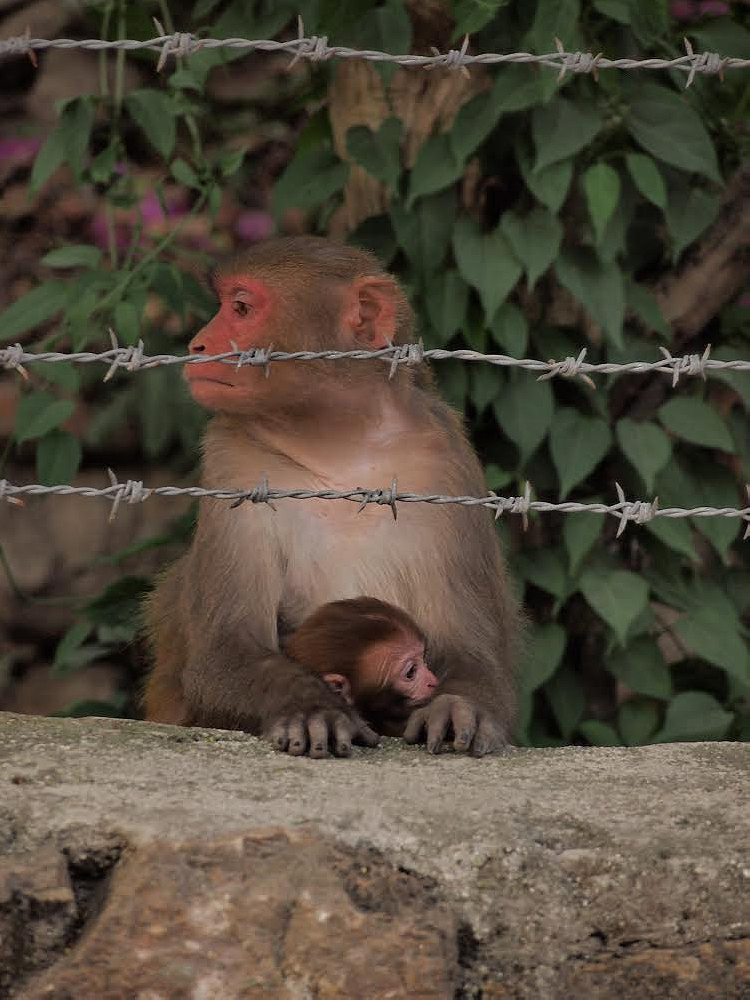
At an orientation meeting, Yeti Holidays managing director Daman Pradhan explained to us that there were two choices for the trip: soft or adventure. Soft meant gentle half-hour treks through shady glades, and the closest you came to Mount Everest was by airplane. The adventure option called for “flying like an insect” to the Tenzing-Hillary Airport in Lukla, the world’s most dangerous airport for a hearty trek at high altitude to see the Himalayas while staying at Yeti’s high mountain lodges. I opted for the adventure trip.
The Tenzing Hillary Airport is a sliver of flattened land on a terrace between a steep cliff and a mountainside. There’s no margin for error. A pilot can’t double-back if he or she comes in too fast or at the wrong angle. The radar isn’t first-rate either, so instrument landings are impossible. We arrived at Kathmandu airport at dawn and went through security to our departure gate, only to find that there was too much cloud cover above Lukla to fly, or, more specifically, to land. The departure lounge was filled with moping climbers and their huge rucksacks, festooned with climbing axes and crampons. Fashions ranged from bedraggled hippy interpretations of the local garb to a Swiss woman in her 50s who wore boy’s lederhosen shorts (suspenders and all) over a bright blue blouse with matching socks and Tyrolean hat (complete with a matching blue feather).
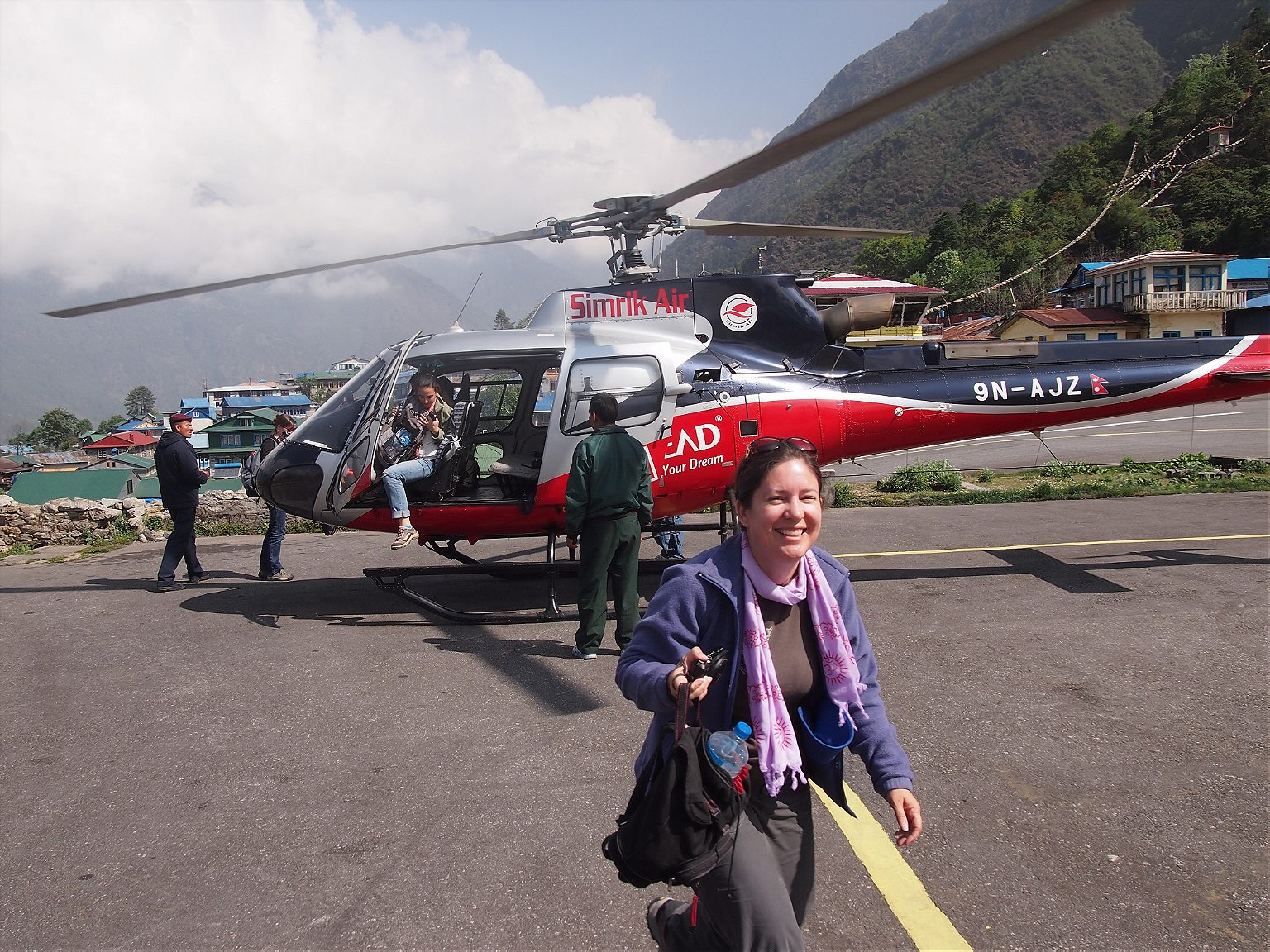
We sat down and waited for the weather to clear. Pradhan doesn’t like to sit. “Come on. Let’s get breakfast,” he told us. The breakfast place, which wasn’t a Yeti Holidays outfit, was closed. We trooped back downstairs and through security again. He passed us bottles of water that one of his assistants had bought from the news kiosk, and started making frenzied cell-phone calls. A few minutes of people-watching and twiddling our thumbs later and he gathered us all together for an announcement:
“Never mind the plane,” he told us, “we’ll get a helicopter.”
It turns out Daman had borrowed a Medevac helicopter. We were on our way.
The Tenzing-Hilary Airport at Lukla is the key to Yeti Holidays success. In the 1980s, two brothers, former Sherpa porters, had borrowed $50,000 to start a company that would take advantage of the new airport. They realized that they could shave about seven days off a typical trek to the Everest Base Camp, which allowed an Everest summit to fit within the confines of a typical American vacation. “Easy Everest” helped Yeti grow into an enormous company (their airline alone does about $40 million a year, according to Pradhan). Their latest gambit is a series of oasis-like lodges they had built along their most popular hiking trails, cozy hill station-like places with well-trained staff and soft mattresses and electricity and hot water and occasionally even WiFi signals. This makes for a far different experience than the traditional sleeping bag splayed out on the floor of a roachy five-dollar-a-night teahouse. Basking by the fire and sipping a hot toddy it was hard not to feel damned comfortable; especially since the service felt so hospitable and there was none of that feeling of estrangement you’d get at a resort or a too-modern chalet.
Everything in those lodges has been carried up on someone’s back
To me, the most remarkable thing about Yeti Holiday’s lodges isn’t so much the comfort of the accommodations—they are still fairly Spartan when compared to something terrestrial like the Gorkana Forest Lodge. Rather, it’s the fact that everything in those lodges, from the mattresses to the tables, from the alcohol to the silverware, has been carried up on someone’s back. Tourism infrastructure is a lot like a military operation, all about maintaining “lines of communication” (i.e. supply lines). That something this complex could be maintained so high up in the mountains is astonishing.
We did a site visit in Lukla (i.e. looking at a lodge and all of its rooms) and ate breakfast. Despite the Sherpas’ warnings to eat well in advance of the day’s hike, one of the travel agents, a young man who was apparently on the South Beach Diet, waved away the mounds of toast and other carbs. We were each issued two bottles of mineral water and set off down the trail.
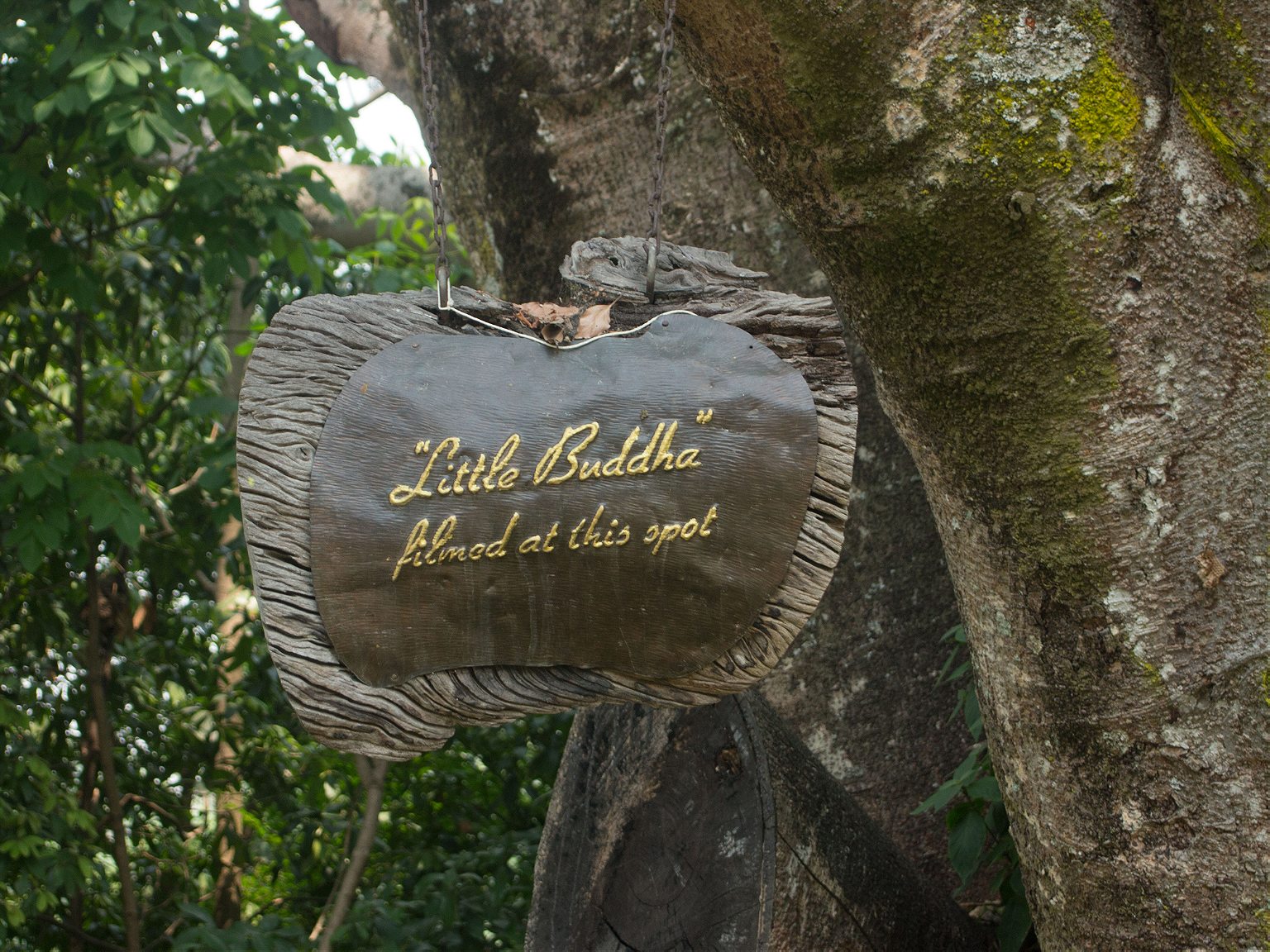
The trail was crowded. Apart from the other tourists, who were mostly coming back down the mountain, there were convoys of porters racing up and down the mountain with enormous loads strapped to their backs and cowherds leading lines of grim, limber creatures called dzo (the females are dzomo). Our mountain guide, a 32-year-old anthropology graduate student from the Sherpa ethnic group who had been born up in the mountains explained the rules of the road: animals and over-laden porters always have the right of way.
The South Beach dieter hit the trail running. He had been bragging to us all along about his marathon running abilities, and ‘extreme youth’ (he was in his twenties, while the rest of us ranged from about 30 to 60), and refused to stop and rest. He quickly succumbed to altitude sickness and heat exhaustion, and passed out in the second lodge.
I could feel my lungs crumpling
The altitude sickness was indeed real; it hit me that first night, manifesting as strange, vivid dreams of walking through lush gardens. The next day, which was mostly uphill walking, there were times when I could feel my lungs crumpling.
Pradhan gave us the history of trekking during our second night on the trail. It all goes back to Gurkha mercenaries. Apparently the British had to pay them pensions, and before telegrams, this meant someone actually had to walk up to the Sherpa villages and hand deliver the cash. It was, for the adventurous sort, an enviable job. Would-be mountaineers squabbled for the chance to ‘trek’ the Himalyas. Col. James Roberts, a former Gurkha commander and military attaché to Nepal, realized there was money to be made clambering around in the mountains, and started a small company in 1965, hiring the local Sherpas to haul luggage and camping equipment. There was no evidence of the recent Sherpa porter strike other than a single poster for the Marxist party that had been defaced with something sharp.
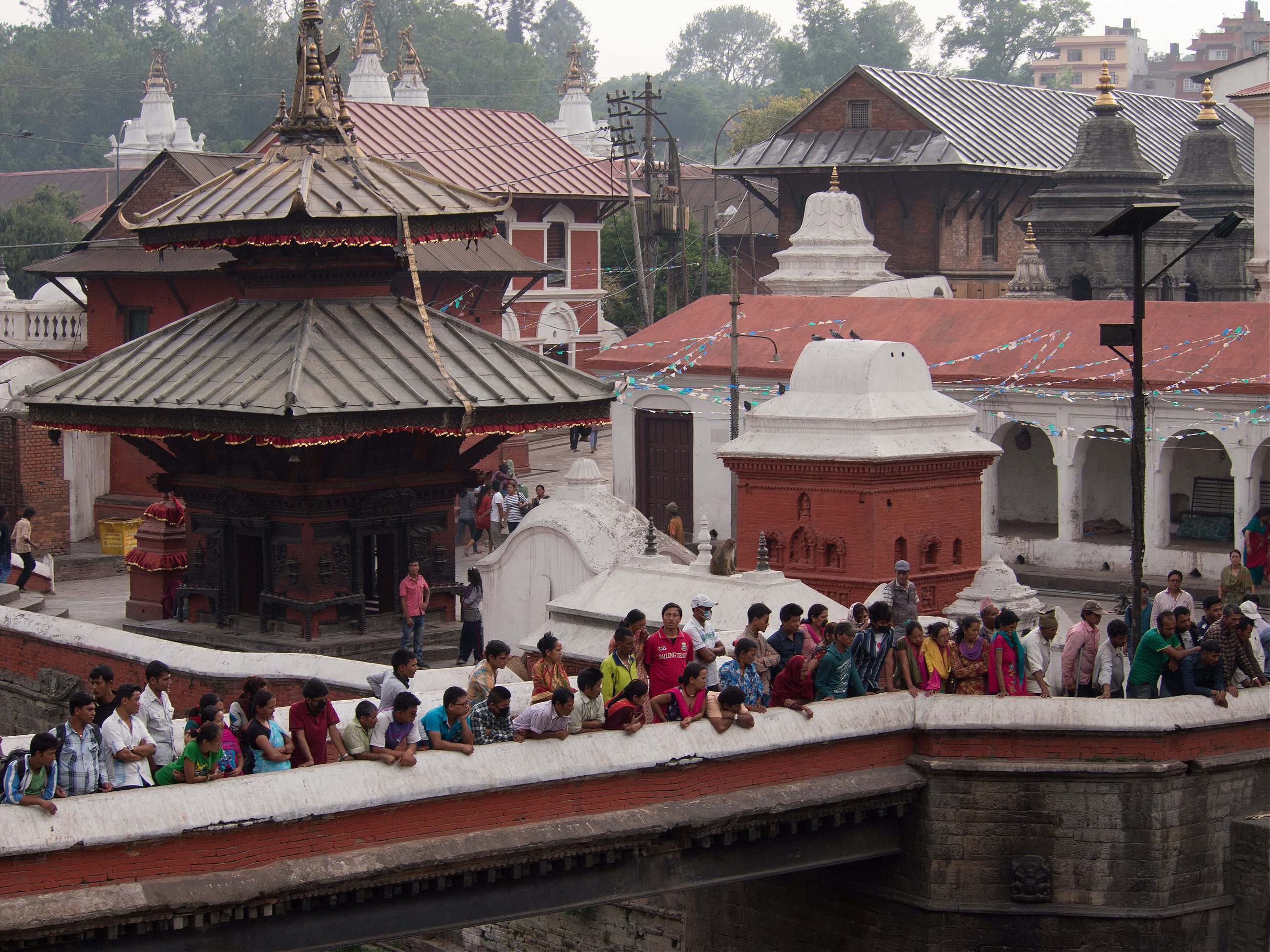
After two days of trekking, we were supposed to take another helicopter to an extremely high altitude lodge, where breakfast would be set up for us. Our group was divided in two. The women flew first. They were dropped off on the mountainside, while the pilot flew back to retrieve us. The pilot was a Westerner, and very inexperienced. The weather changed quickly, becoming clouds and blustery with wind, and he panicked and flew us men all the way back to Lukla, leaving the ladies stranded at 5000m (which meant they would have to descend 1000 meters fairly quickly or they would succumb to serious altitude sickness). After several attempts he finally managed to pick them up, but only after refusing to pick them up from the helipad and instead forcing them to scramble up about a half mile of steep gravel. Apparently the pilot was so flustered he spun around in place too tightly, triggering an ominous warning siren on the way back to Lukla.
I asked the travel agents about other FAMs—familiarization trips like this one—that they had been on and how this one measured up. Usually FAMS weren’t in exotic locations like Nepal, they said. China was a common destination, where a typical outing consisted of being taken to dozens of very similar factories, but most often it was a place close to home, like a Caribbean resort, where literally all you did there was go through hotels and poke around rooms. Nothing nearly so exciting as trekking or fainting or having delirious altitude dreams. So far we had been spared what they said was the most awkward part of the FAM experience: when you sat down for dinner with the hosts and there was absolutely nothing to say.
The FAM wasn’t as indulgent I thought it would be—when you’re worried about doing something corrupt (in this case, a free trip in exchange for coverage), you expect a certain level of sumptuousness—and this was certainly a luxurious trip, but it was also an exhausting one, much more so than you would think. It seemed like every instant we were being dragged off to another activity. (And apparently this trip had much more “open time” than a usual FAM). The organizers want to show you everything they’ve got, and have little incentive to let you lounge about and steep in the luxurious atmosphere. But for all of its artificiality as an construct, this FAM was a genuine experience, the mountain views—which were the real attraction—were just as splendid as they were when I traveled to Nepal as a tourist decades ago, and the hanging bridges and charging rhino seemed just as perilous. Plus there is only so much you can conceal from a junket-going journalist. In my travels I have been to many second, third and fourth-rate resorts in South Asia, and there are only so many ways you can conceal incompetent staff and foul, dangerous conditions. There was none of that in evidence here. So even if the service was a bit snappier with the managing director around, Yeti Travels is no Potemkin village. It is a first-rate travel company.
There had been a design disaster
Even its flaws have their charms, starting with the new Kasara Resort in the Chitwan National Park. After trekking around both Everest and the Annapurnas (which are closer to the city of Pokahra), we were taken to Kasara. Throughout the trip, Daman had been talking a lot about architecture and design. He pointed out a hotel he had helped design when he worked with the Shangri-La hotel group and talked about the trio of young Nepalese architects who had designed the lodges. At Kasara, I realized why it was on his mind. There had been a design disaster.
Apparently Yeti’s owners had a friend, a Frenchman, who claimed that he was an architect. They looked him up online and found a gorgeous portfolio of images. To be safe, they gave him a test run, asking him to redesign the interior of a restaurant and they liked what he did it with it, and so they asked him to design their latest resort, which was in the middle of the jungle. Unfortunately for them, this Frenchman wasn’t really an architect, he was an architectural photographer. He hadn’t designed those glorious buildings in his portfolio, he had only photographed them.
The resort that this photographer-masquerading-as-an-architect designed was like a precocious architectural student’s senior thesis: full of ambitious, interesting ideas that were idiotic in practice. The most obvious issue was that he had put in Balinese-style bathrooms, which are outdoors. The last thing you want in a jungle filled with oversized, dangerous insects is to be exposed when you are at your most vulnerable. For me, this meant that first I had to douse the area in DEET and then switch off the lights before using the toilet. I only showered with my glasses on.
And yet: the bedrooms were amazing, each was its own cottage, with a little moat and a bridge leading in and a shaded outdoor sitting area, with the glassed-in, air-conditioned bedroom on one side and a door leading to the outdoor bathroom on the other. Beautiful and peaceful, but I couldn’t help wondering about snakes and what would happen if I drunkenly stepped off the bridge. It reminded me of Paolo Soleri’s Arcosanti project, an attempt at building a city into a single building in the middle of the Arizona desert. You don’t often see something that has such an extreme, ambitious design.
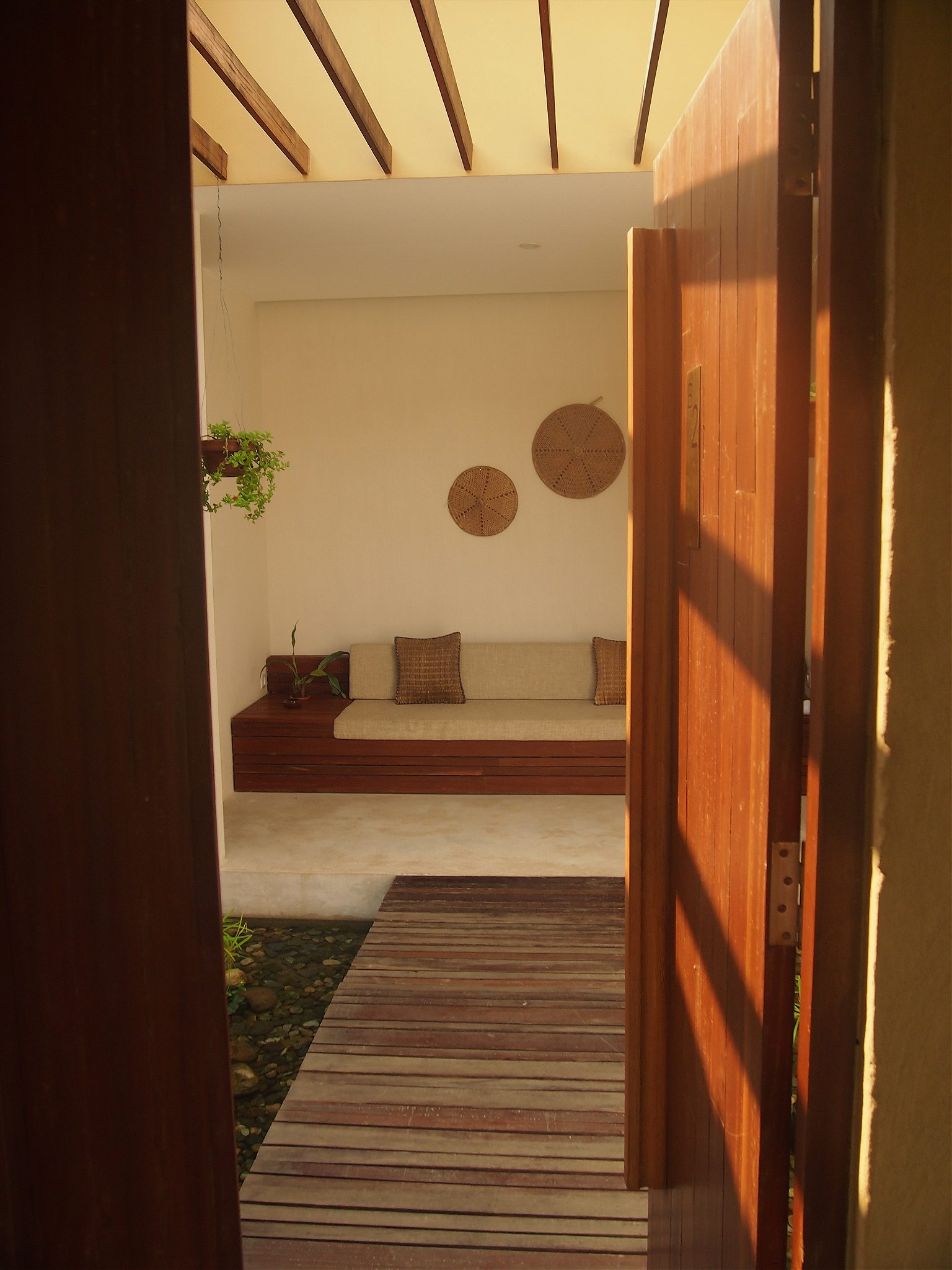
When I was an American kid growing up in southeast Asia, the many knockoffs of western culture (Indian versions of “Thriller”, etc.) used to grate endlessly. Yeti Holidays’ lodges are worth the visit because they avoid such imitation. They have managed to retain a uniquely Nepalese and Tibetan hospitality and translate it into a more luxurious experience. The Gorkana Forest Lodge and the Kasara are stranger and more uncomfortable to contend with, if only because they try to offer an exact replica of a Western five-star experience, but can’t do it as well because they were in the middle of Nepal. The development boom, with its attendant traffic jams and multitudes of new cellphone owners, had not changed some essential truths about Nepal. It is a place that excels at being itself. Yeti is figuring that out, if in fits and starts. And that’s the truth, FAM trip or no.